Re-Run Actions
Overview of Re-run Actions
Re-run actions are essential tools in data processing workflows that enable users to manually re-initiate workflows, exports, and uploads. These actions are useful for applying updates, fixing errors, or adjusting settings without starting over. They help ensure data accuracy and save time, making them ideal for environments where frequent changes occur.
How to access re-run actions:
To access re-run actions, follow these steps:
- Navigate to the Data Extraction Screen: Open the file you are interested in.
- Access re-run actions: Click on the three dots located at the top right corner of the file screen.

Re-run Workflow
Overview
The "Re-run Workflow" action enables you to re-process the entire workflow for a file. This action is particularly useful in ensuring that all updates and configurations applied to the workflow are reflected in the file's processed data.
What it Does
Executing this action will re-run the entire workflow, applying all data actions and Python post-processing blocks configured in your workflow. It is important to note that this will overwrite any manual changes made to the fields with the newly processed data.
Use Cases
- Processing Old Files: Use this action for files processed prior to the current workflow configuration. It ensures that past files reflect changes from the latest workflow updates.
- Reflecting Workflow Changes: If you've made any major/minor adjustments to your workflow settings, this action will apply these changes to already processed files, updating them with the new configurations.
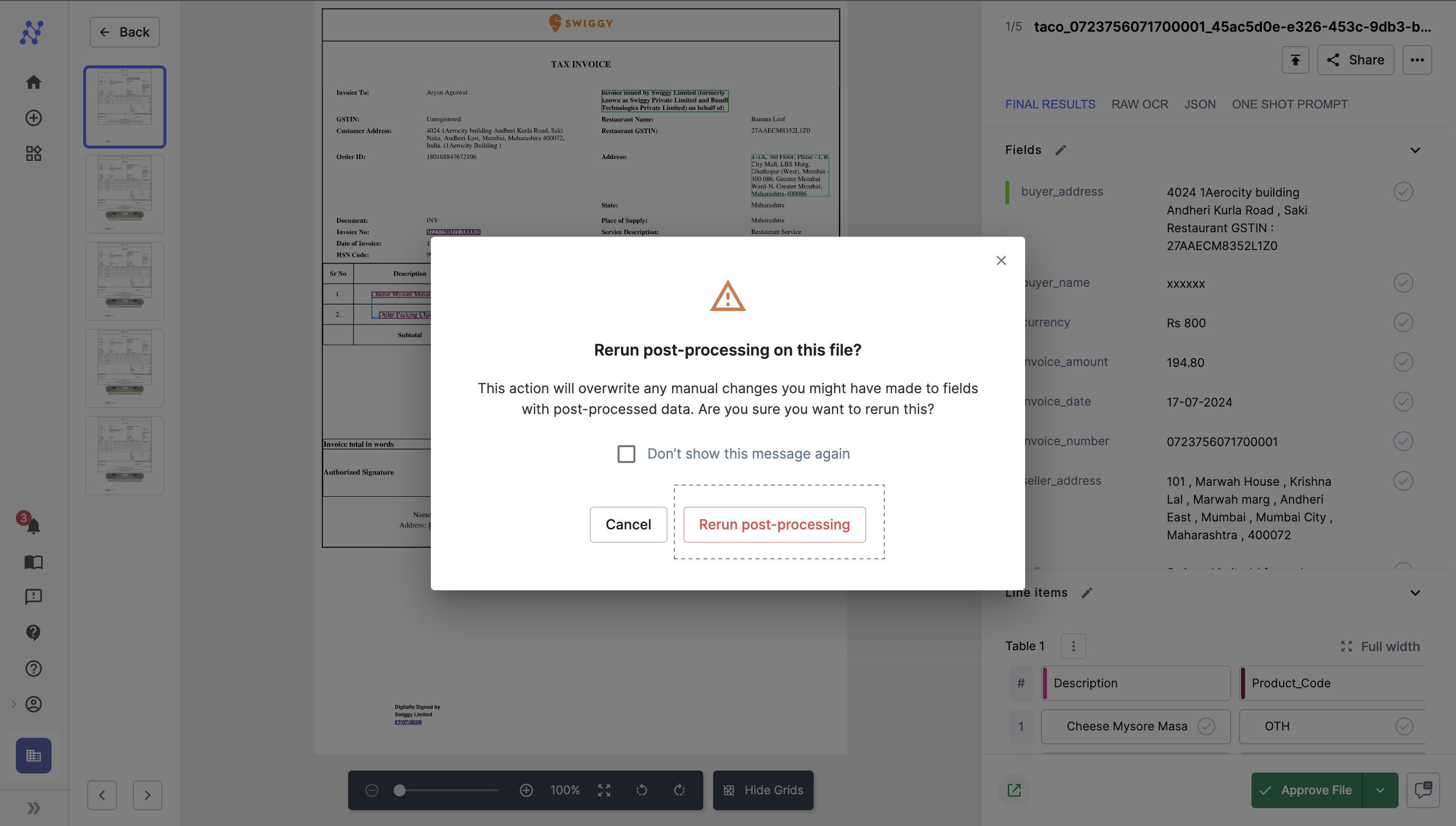
Checking Workflow Run History
How to Access
To review the history of a workflow run, follow these steps:
- Navigate to the Data Extraction Screen: Open the file you are interested in.
- Access History: Click on the three dots located at the top right corner of the file screen.
- View Workflow History: Select History from the options, and then choose Workflow Run History.

Note: You can re-run the workflow on unapproved files. To re-run the workflow on approved files, first unapprove the file and then try running the workflow again. Use the dropdown on the bottom right corner and select "UnApprove file" to un-approve the file.
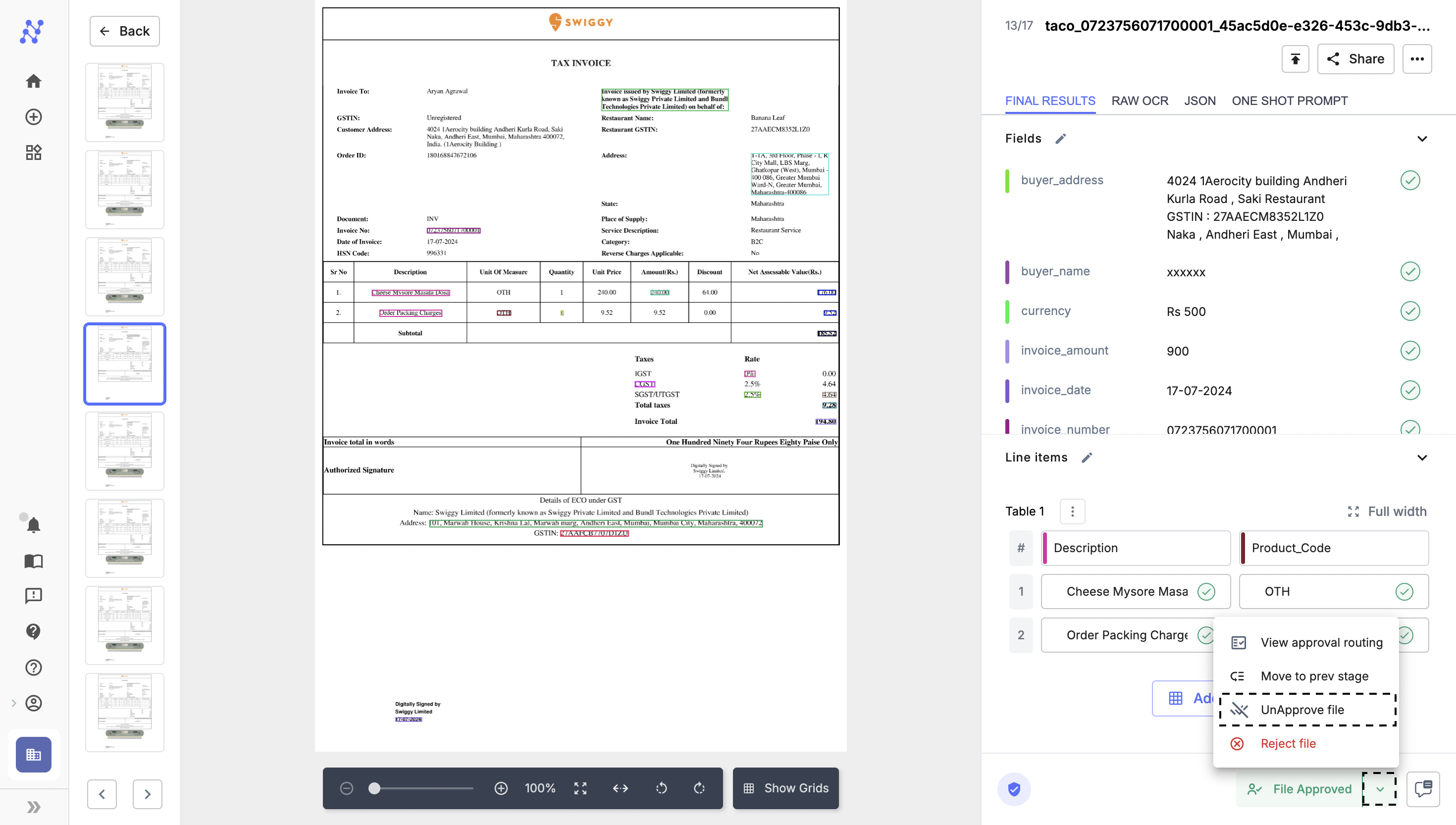
What You'll See
In the Workflow Run History, you will find detailed information on the status of each export block within the workflow. This section provides insights into the processing state of each export block, helping you diagnose and understand the flow of data for each export block.
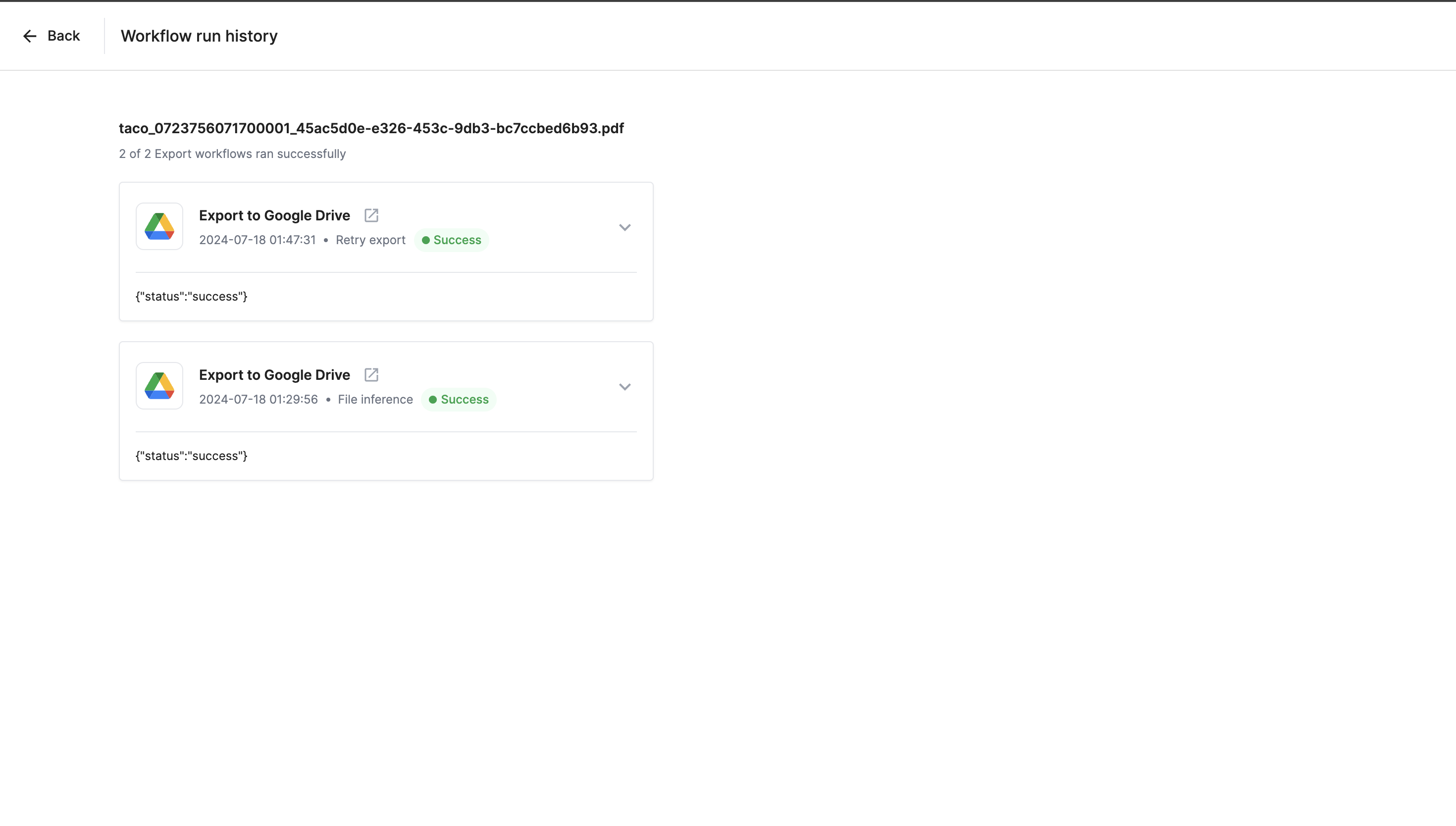
Retry Export
Overview
The "Retry Export" action allows you to initiate or re-initiate the export of extracted data or file manually. This action is particularly useful when exports fail or when you need to resend data to an external destination like Google Drive, where issues like authorization errors can interrupt the process.
What it Does
This action re-triggers the export process for a selected file, making it a practical solution for overcoming export failures due to technical or unexpected errors. It can be used to resend data irrespective of the previous export’s success or failure.
Use Cases
- Handling Export Failures: Ideal for situations where the export process fails due to technical issues such as connectivity problems or destination service errors (e.g., authorization failures with Google Drive).
- Manual Export Trigger: Useful for cases where you need to manually initiate or re-initiate the export process, whether the initial attempt was successful or not.
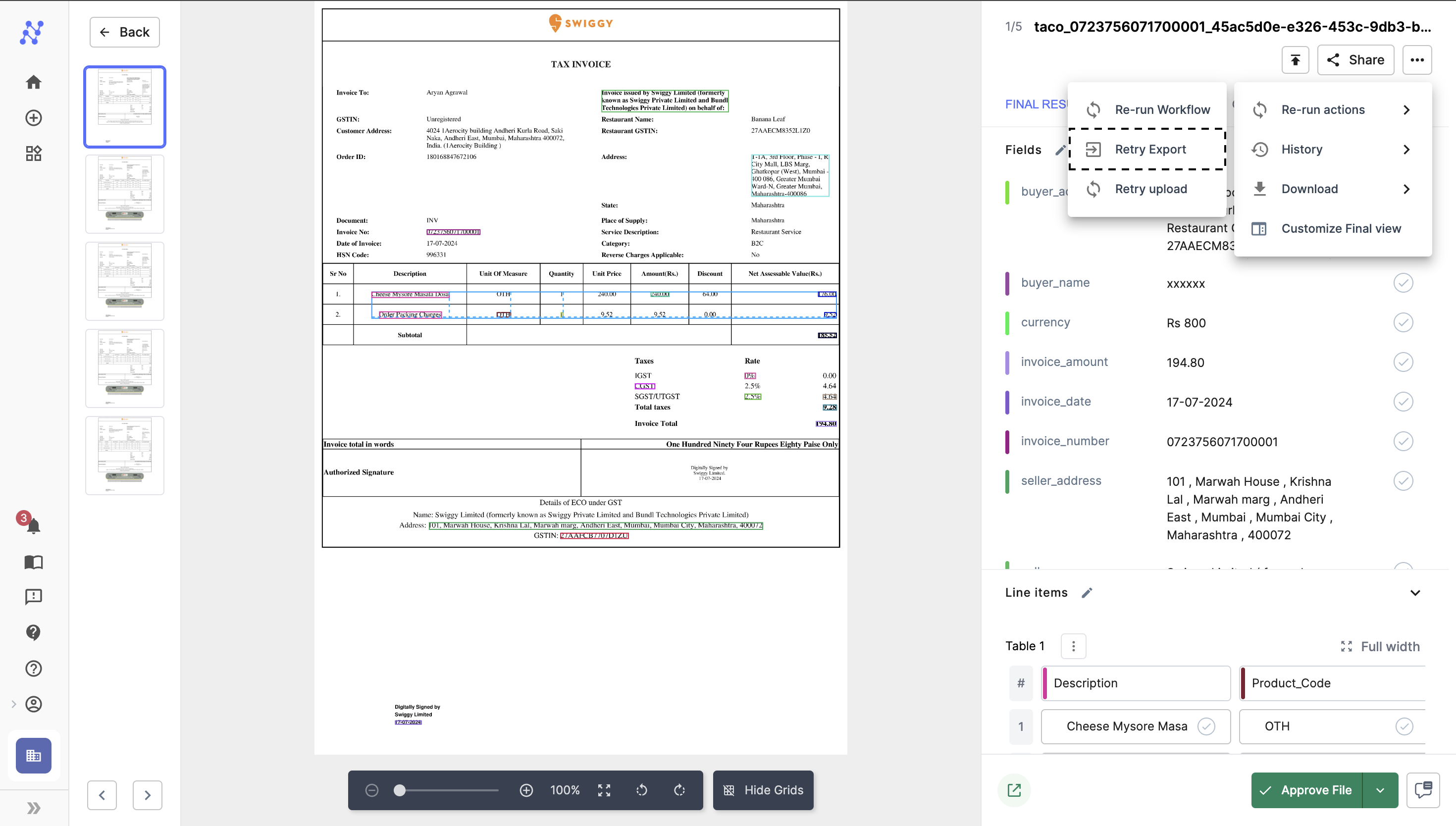
Checking Export Status
How to Access
To review the export status, follow these steps:
- Navigate to the Data Extraction Screen: Open the file you are interested in.
- Access Export Status: Click on the share icon located at the bottom right corner of the file screen.
This will take you to the “Workflow run history” screen, here you will find detailed information on the status of each export block within the workflow.
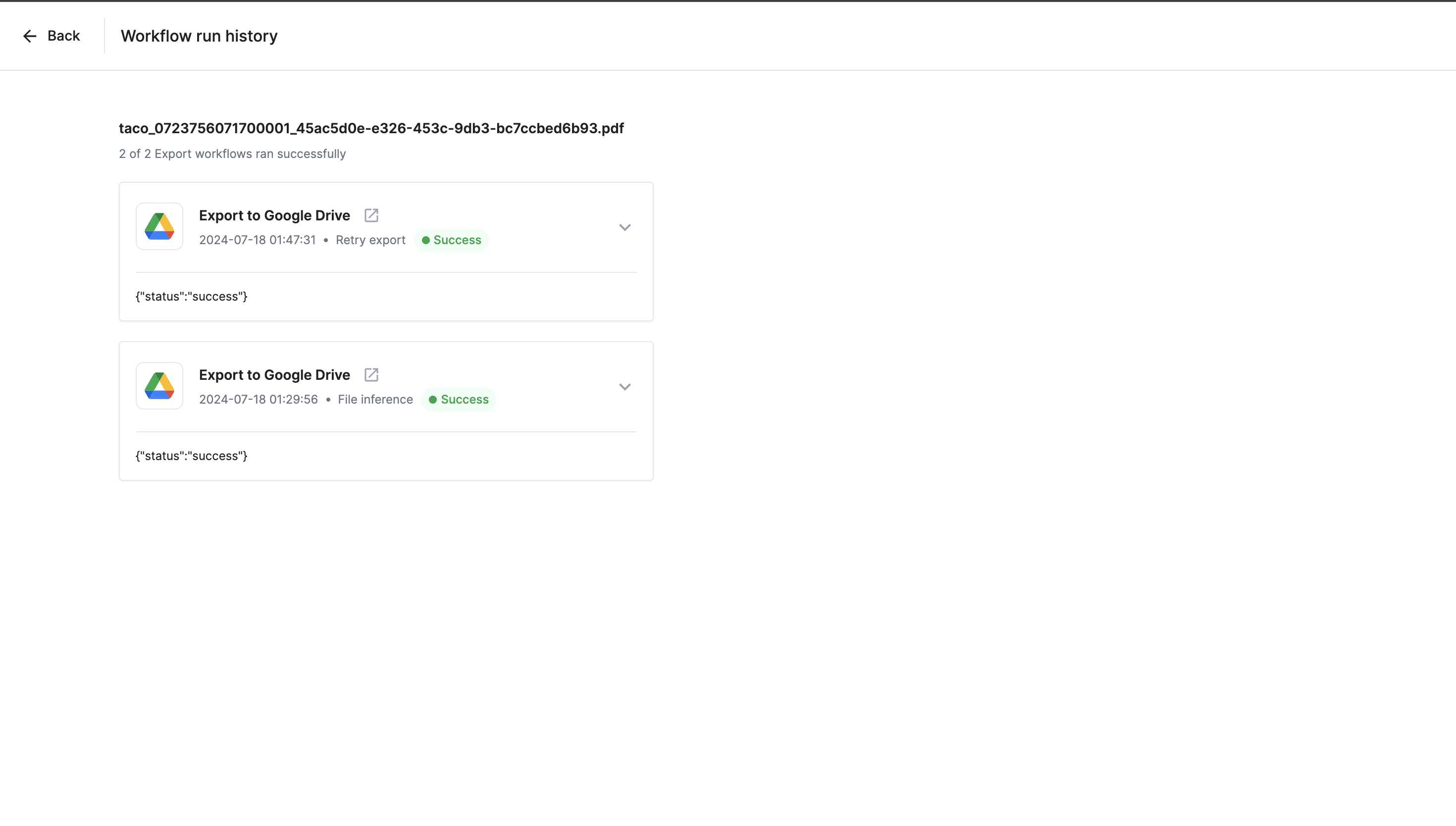
Retry Upload
Overview
The "Retry Upload" action allows for the manual re-upload of files. This feature is particularly useful in scenarios where updates to the processing logic or When data sources change(dynamic lookups), you need to upload your files again to include these updates.
What it Does
Activating this action re-uploads a selected file manually, ensuring that any updates in Python post-processing scripts or external data sources are applied to the final results of the file.
Use Cases
- Updating Python Post-Processing Changes: Use this action when changes have been made to Python post-processing scripts. Re-uploading the file ensures that these modifications are reflected in the final output.
- Dynamic Data Updates: Ideal for situations where a file interacts with external data sources that are updated regularly (e.g., daily lookups from dynamically updated sheets). Re-uploading ensures that the latest data is fetched and used.
- Post-Model Retraining: Helpful when the underlying model has been retrained. Re-uploading the file allows the newly trained model to process the data, potentially improving accuracy or relevance of the results.
- Updating Reference Files: Use the retry upload feature when you've corrected a closest match file and thereby want to retry upload so that it takes reference from this updated closest match file
- New Field Descriptions: If you've added a new description to a field, particularly for Oneshot or Zeroshot fields, consider re-uploading relevant files to ensure the new descriptions are used effectively.
- New Training: After training the pre-trained model with a new set of files, retry uploading existing files to benefit from the updated model's capabilities, ensuring outputs are aligned with the latest training.
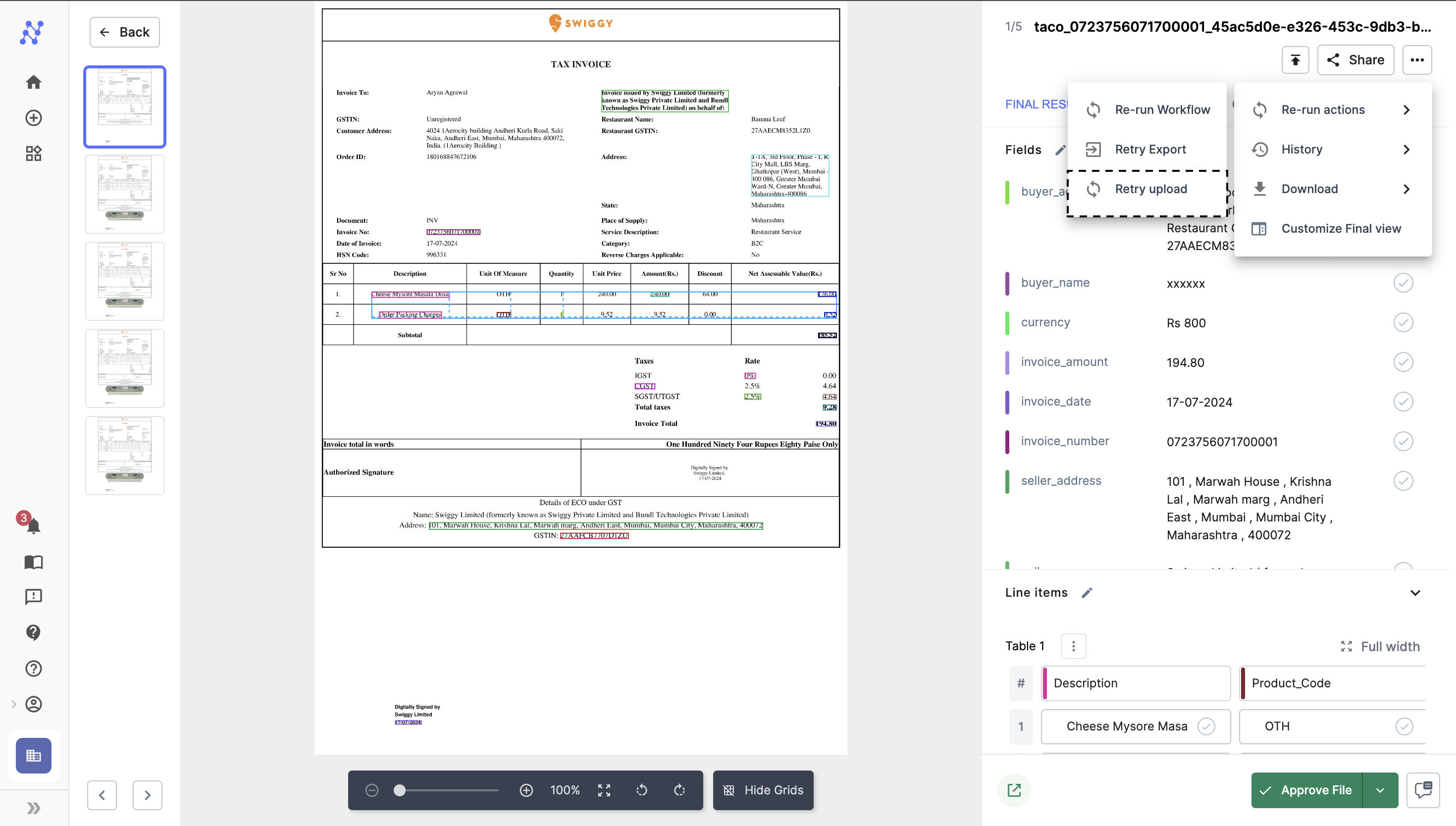
Updated 8 months ago
